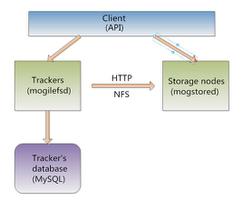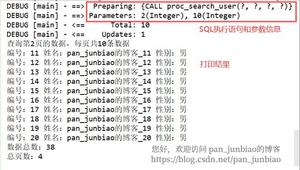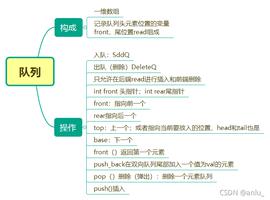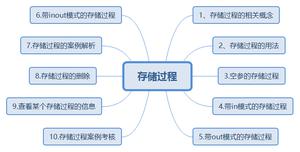asp.net中如何调用sql存储过程实现分页
首先看下面的代码创建存储过程
1、创建存储过程,语句如下:
CREATE PROC P_viewPage
@TableName VARCHAR(200), --表名
@FieldList VARCHAR(2000), --显示列名,如果是全部字段则为*
@PrimaryKey VARCHAR(100), --单一主键或唯一值键
@Where VARCHAR(2000), --查询条件 不含'where'字符,如id>10 and len(userid)>9
@Order VARCHAR(1000), --排序 不含'order by'字符,如id asc,userid desc,必须指定asc或desc
--注意当@SortType=3时生效,记住一定要在最后加上主键,否则会让你比较郁闷
@SortType INT, --排序规则 1:正序asc 2:倒序desc 3:多列排序方法
@RecorderCount INT, --记录总数 0:会返回总记录
@PageSize INT, --每页输出的记录数
@PageIndex INT, --当前页数
@TotalCount INT OUTPUT, --记返回总记录
@TotalPageCount INT OUTPUT --返回总页数
AS
SET NOCOUNT ON
IF ISNULL(@TotalCount,'') = '' SET @TotalCount = 0
SET @Order = RTRIM(LTRIM(@Order))
SET @PrimaryKey = RTRIM(LTRIM(@PrimaryKey))
SET @FieldList = REPLACE(RTRIM(LTRIM(@FieldList)),' ','')
WHILE CHARINDEX(', ',@Order) > 0 OR CHARINDEX(' ,',@Order) > 0
BEGIN
SET @Order = REPLACE(@Order,', ',',')
SET @Order = REPLACE(@Order,' ,',',')
END
IF ISNULL(@TableName,'') = '' OR ISNULL(@FieldList,'') = ''
OR ISNULL(@PrimaryKey,'') = ''
OR @SortType < 1 OR @SortType >3
OR @RecorderCount < 0 OR @PageSize < 0 OR @PageIndex < 0
BEGIN
PRINT('ERR_00')
RETURN
END
IF @SortType = 3
BEGIN
IF (UPPER(RIGHT(@Order,4))!=' ASC' AND UPPER(RIGHT(@Order,5))!=' DESC')
BEGIN PRINT('ERR_02') RETURN END
END
DECLARE @new_where1 VARCHAR(1000)
DECLARE @new_where2 VARCHAR(1000)
DECLARE @new_order1 VARCHAR(1000)
DECLARE @new_order2 VARCHAR(1000)
DECLARE @new_order3 VARCHAR(1000)
DECLARE @Sql VARCHAR(8000)
DECLARE @SqlCount NVARCHAR(4000)
IF ISNULL(@where,'') = ''
BEGIN
SET @new_where1 = ' '
SET @new_where2 = ' WHERE '
END
ELSE
BEGIN
SET @new_where1 = ' WHERE ' + @where
SET @new_where2 = ' WHERE ' + @where + ' AND '
END
IF ISNULL(@order,'') = '' OR @SortType = 1 OR @SortType = 2
BEGIN
IF @SortType = 1
BEGIN
SET @new_order1 = ' ORDER BY ' + @PrimaryKey + ' ASC'
SET @new_order2 = ' ORDER BY ' + @PrimaryKey + ' DESC'
END
IF @SortType = 2
BEGIN
SET @new_order1 = ' ORDER BY ' + @PrimaryKey + ' DESC'
SET @new_order2 = ' ORDER BY ' + @PrimaryKey + ' ASC'
END
END
ELSE
BEGIN
SET @new_order1 = ' ORDER BY ' + @Order
END
IF @SortType = 3 AND CHARINDEX(','+@PrimaryKey+' ',','+@Order)>0
BEGIN
SET @new_order1 = ' ORDER BY ' + @Order
SET @new_order2 = @Order + ','
SET @new_order2 = REPLACE(REPLACE(@new_order2,'ASC,','{ASC},'),'DESC,','{DESC},')
SET @new_order2 = REPLACE(REPLACE(@new_order2,'{ASC},','DESC,'),'{DESC},','ASC,')
SET @new_order2 = ' ORDER BY ' + SUBSTRING(@new_order2,1,LEN(@new_order2)-1)
IF @FieldList <> '*'
BEGIN
SET @new_order3 = REPLACE(REPLACE(@Order + ',','ASC,',','),'DESC,',',')
SET @FieldList = ',' + @FieldList
WHILE CHARINDEX(',',@new_order3)>0
BEGIN
IF CHARINDEX(SUBSTRING(','+@new_order3,1,CHARINDEX(',',@new_order3)),','+@FieldList+',')>0
BEGIN
SET @FieldList =
@FieldList + ',' + SUBSTRING(@new_order3,1,CHARINDEX(',',@new_order3))
END
SET @new_order3 =
SUBSTRING(@new_order3,CHARINDEX(',',@new_order3)+1,LEN(@new_order3))
END
SET @FieldList = SUBSTRING(@FieldList,2,LEN(@FieldList))
END
END
SET @SqlCount = 'SELECT @TotalCount=COUNT(*),@TotalPageCount=CEILING((COUNT(*)+0.0)/'
+ CAST(@PageSize AS VARCHAR)+') FROM ' + @TableName + @new_where1
IF @RecorderCount = 0
BEGIN
EXEC SP_EXECUTESQL @SqlCount,N'@TotalCount INT OUTPUT,@TotalPageCount INT OUTPUT',
@TotalCount OUTPUT,@TotalPageCount OUTPUT
END
ELSE
BEGIN
SELECT @TotalCount = @RecorderCount
END
IF @PageIndex > CEILING((@TotalCount+0.0)/@PageSize)
BEGIN
SET @PageIndex = CEILING((@TotalCount+0.0)/@PageSize)
END
IF @PageIndex = 1 OR @PageIndex >= CEILING((@TotalCount+0.0)/@PageSize)
BEGIN
IF @PageIndex = 1 --返回第一页数据
BEGIN
SET @Sql = 'SELECT TOP ' + STR(@PageSize) + ' ' + @FieldList + ' FROM '
+ @TableName + @new_where1 + @new_order1
END
IF @PageIndex >= CEILING((@TotalCount+0.0)/@PageSize) --返回最后一页数据
BEGIN
SET @Sql = 'SELECT TOP ' + STR(@PageSize) + ' ' + @FieldList + ' FROM ('
+ 'SELECT TOP ' + STR(ABS(@PageSize*@PageIndex-@TotalCount-@PageSize))
+ ' ' + @FieldList + ' FROM '
+ @TableName + @new_where1 + @new_order2 + ' ) AS TMP '
+ @new_order1
END
END
ELSE
BEGIN
IF @SortType = 1 --仅主键正序排序
BEGIN
IF @PageIndex <= CEILING((@TotalCount+0.0)/@PageSize)/2 --正向检索
BEGIN
SET @Sql = 'SELECT TOP ' + STR(@PageSize) + ' ' + @FieldList + ' FROM '
+ @TableName + @new_where2 + @PrimaryKey + ' > '
+ '(SELECT MAX(' + @PrimaryKey + ') FROM (SELECT TOP '
+ STR(@PageSize*(@PageIndex-1)) + ' ' + @PrimaryKey
+ ' FROM ' + @TableName
+ @new_where1 + @new_order1 +' ) AS TMP) '+ @new_order1
END
ELSE --反向检索
BEGIN
SET @Sql = 'SELECT TOP ' + STR(@PageSize) + ' ' + @FieldList + ' FROM ('
+ 'SELECT TOP ' + STR(@PageSize) + ' '
+ @FieldList + ' FROM '
+ @TableName + @new_where2 + @PrimaryKey + ' < '
+ '(SELECT MIN(' + @PrimaryKey + ') FROM (SELECT TOP '
+ STR(@TotalCount-@PageSize*@PageIndex) + ' ' + @PrimaryKey
+ ' FROM ' + @TableName
+ @new_where1 + @new_order2 +' ) AS TMP) '+ @new_order2
+ ' ) AS TMP ' + @new_order1
END
END
IF @SortType = 2 --仅主键反序排序
BEGIN
IF @PageIndex <= CEILING((@TotalCount+0.0)/@PageSize)/2 --正向检索
BEGIN
SET @Sql = 'SELECT TOP ' + STR(@PageSize) + ' ' + @FieldList + ' FROM '
+ @TableName + @new_where2 + @PrimaryKey + ' < '
+ '(SELECT MIN(' + @PrimaryKey + ') FROM (SELECT TOP '
+ STR(@PageSize*(@PageIndex-1)) + ' ' + @PrimaryKey
+' FROM '+ @TableName
+ @new_where1 + @new_order1 + ') AS TMP) '+ @new_order1
END
ELSE --反向检索
BEGIN
SET @Sql = 'SELECT TOP ' + STR(@PageSize) + ' ' + @FieldList + ' FROM ('
+ 'SELECT TOP ' + STR(@PageSize) + ' '
+ @FieldList + ' FROM '
+ @TableName + @new_where2 + @PrimaryKey + ' > '
+ '(SELECT MAX(' + @PrimaryKey + ') FROM (SELECT TOP '
+ STR(@TotalCount-@PageSize*@PageIndex) + ' ' + @PrimaryKey
+ ' FROM ' + @TableName
+ @new_where1 + @new_order2 +' ) AS TMP) '+ @new_order2
+ ' ) AS TMP ' + @new_order1
END
END
IF @SortType = 3 --多列排序,必须包含主键,且放置最后,否则不处理
BEGIN
IF CHARINDEX(',' + @PrimaryKey + ' ',',' + @Order) = 0
BEGIN PRINT('ERR_02') RETURN END
IF @PageIndex <= CEILING((@TotalCount+0.0)/@PageSize)/2 --正向检索
BEGIN
SET @Sql = 'SELECT TOP ' + STR(@PageSize) + ' ' + @FieldList + ' FROM ( '
+ 'SELECT TOP ' + STR(@PageSize) + ' ' + @FieldList + ' FROM ( '
+ ' SELECT TOP ' + STR(@PageSize*@PageIndex) + ' ' + @FieldList
+ ' FROM ' + @TableName + @new_where1 + @new_order1 + ' ) AS TMP '
+ @new_order2 + ' ) AS TMP ' + @new_order1
END
ELSE --反向检索
BEGIN
SET @Sql = 'SELECT TOP ' + STR(@PageSize) + ' ' + @FieldList + ' FROM ( '
+ 'SELECT TOP ' + STR(@PageSize) + ' ' + @FieldList + ' FROM ( '
+ ' SELECT TOP ' + STR(@TotalCount-@PageSize*@PageIndex+@PageSize) + ' ' + @FieldList
+ ' FROM ' + @TableName + @new_where1 + @new_order2 + ' ) AS TMP '
+ @new_order1 + ' ) AS TMP ' + @new_order1
END
END
END
PRINT(@Sql)
EXEC(@Sql)
GO
2、SQL Server 中调用测试代码
--执行存储过程
declare @TotalCount int,
@TotalPageCount int
exec P_viewPage 'T_Module','*','ModuleID','','',1,0,10,1,@TotalCount output,@TotalPageCount output
Select @TotalCount,@TotalPageCount;
asp.net 代码实现:
#region ===========通用分页存储过程===========
public static DataSet RunProcedureDS(string connectionString, string storedProcName, IDataParameter[] parameters, string tableName)
{
using (SqlConnection connection = new SqlConnection(connectionString))
{
DataSet dataSet = new DataSet();
connection.Open();
SqlDataAdapter sqlDA = new SqlDataAdapter();
sqlDA.SelectCommand = BuildQueryCommand(connection, storedProcName, parameters);
sqlDA.Fill(dataSet, tableName);
connection.Close();
return dataSet;
}
}
/// <summary>
/// 通用分页存储过程
/// </summary>
/// <param name="connectionString"></param>
/// <param name="tblName"></param>
/// <param name="strGetFields"></param>
/// <param name="primaryKey"></param>
/// <param name="strWhere"></param>
/// <param name="strOrder"></param>
/// <param name="sortType"></param>
/// <param name="recordCount"></param>
/// <param name="PageSize"></param>
/// <param name="PageIndex"></param>
/// <param name="totalCount"></param>
/// <param name="totalPageCount"></param>
/// <returns></returns>
public static DataSet PageList(string connectionString, string tblName, string strGetFields, string primaryKey, string strWhere, string strOrder, int sortType, int recordCount,
int PageSize, int PageIndex,ref int totalCount,ref int totalPageCount)
{
SqlParameter[] parameters ={ new SqlParameter("@TableName ",SqlDbType.VarChar,200),
new SqlParameter("@FieldList",SqlDbType.VarChar,2000),
new SqlParameter("@PrimaryKey",SqlDbType.VarChar,100),
new SqlParameter("@Where",SqlDbType.VarChar,2000),
new SqlParameter("@Order",SqlDbType.VarChar,1000),
new SqlParameter("@SortType",SqlDbType.Int),
new SqlParameter("@RecorderCount",SqlDbType.Int),
new SqlParameter("@PageSize",SqlDbType.Int),
new SqlParameter("@PageIndex",SqlDbType.Int),
new SqlParameter("@TotalCount",SqlDbType.Int),
new SqlParameter("@TotalPageCount",SqlDbType.Int)};
parameters[0].Value = tblName;
parameters[1].Value = strGetFields;
parameters[2].Value = primaryKey;
parameters[3].Value = strWhere;
parameters[4].Value = strOrder;
parameters[5].Value = sortType;
parameters[6].Value = recordCount;
parameters[7].Value = PageSize;
parameters[8].Value = PageIndex;
parameters[9].Value = totalCount;
parameters[9].Direction = ParameterDirection.Output;
parameters[10].Value = totalPageCount;
parameters[10].Direction = ParameterDirection.Output;
DataSet ds = RunProcedureDS(connectionString, "P_viewPage", parameters, "PageListTable");
totalCount = int.Parse(parameters[9].Value.ToString());
totalPageCount = int.Parse(parameters[10].Value.ToString());
return ds;
}
#endregion
DataSet ds = SqlHelper.PageList(SqlHelper.LocalSqlServer, "T_User", "*", "UserID", "", "", 1, 0, pageSize, 1, ref totalCount, ref totalPageCount);
this.RptData.DataSource = ds;
this.RptData.DataBind();
以上内容就是本文介绍asp.net中如何调用sql存储过程实现分页的全部内容,希望对大家今后的学习有所帮助,当然方法不止本文所述,欢迎与大家分享好的方案。
以上是 asp.net中如何调用sql存储过程实现分页 的全部内容, 来源链接: utcz.com/z/334272.html








